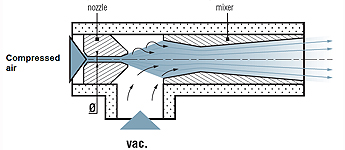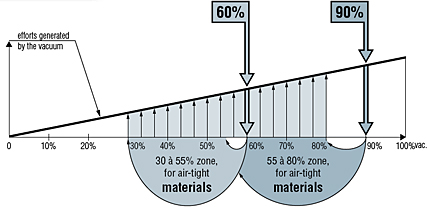Venturi vacuum pumps
All intermittent gripping operations, i.e. which do not last for complete cycle of the machine.
Advantages:
. Consumption only when needed, results in low air consumption.
. Installation very close to the suction pads.
. Suction flow rate and vacuum level optimized to each individual requirement.
 Using the «venturi» effect :
Using the «venturi» effect :
.jpg)